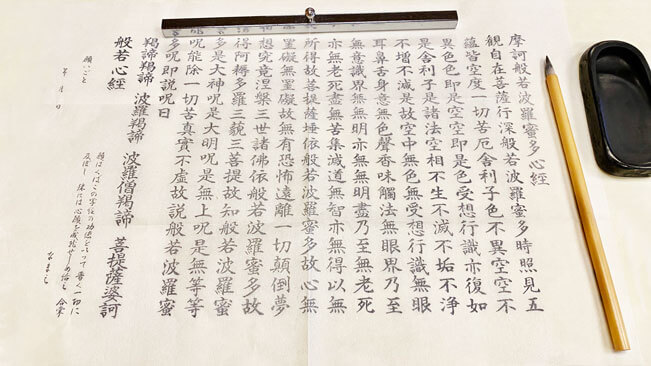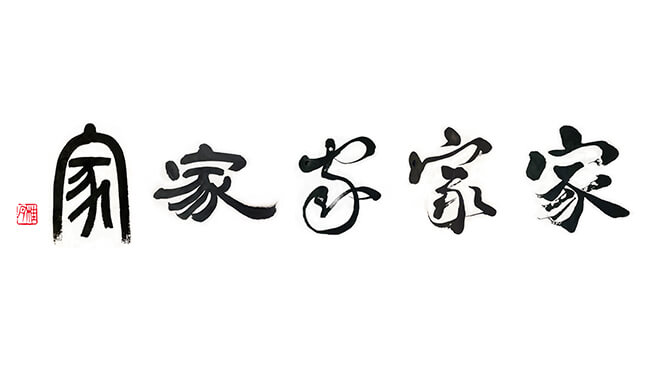
Shakyo (by calligraphy) gives us mindful time
Shakyo is a Japanese word that refers to the activity of copying Buddhist sutra texts by hand, using Japanese calligraphy. I believe that doing Shakyo is a unique experience and can be one of the mindful times. We can do Shakyo anywhere if we have some writing tools such as pen and paper. However, it is a refreshing time to work on writing sutra texts in a different place than usual.
Today, I would like to share my experience of doing Shakyo at a Japanese temple the other day. I would like to introduce a Shakyo session that I participated in and insights I gained from it. That was aimed at the general public and the entire process took approximately 2.5 hours as follows (All services during the session were delivered in Japanese).
Registration
All participants registered for the Shakyo session at the entrance of the temple, the venue for the day. We received a piece of Shakyo paper and a printed sample model with the full text of the sutra (Heart Sutra) to be copied. Participation fee was 500 JPY and we needed to register via online beforehand.

Briefing Session

Sample sutra texts (Heart Sutra) for copying
Then, the session began. At the beginning, a monk of the temple provided a short speech from Buddhism topics with us such as seasonal subjects and historical stories. After that, we got started copying sutra texts. Complete silence. No talking was allowed. Each participant were copying sutra texts at his or her own pace. We were sitting on floor in seiza style (with a thin cushion on tatami), and our feet started to hurt may ache during the sutra, after a while. But there was no problem if we took a short break, as long as we were quiet and didn’t leave the hall.

Seiza style
In the session, the copied works by the participants are basically dedicated to the temple. At the end of sutra copying, we were told that we can write our wish on each copied Shakyo paper. (Examples of the wish include a wish for good health or family safety. But I suppose any wishes are acceptable.)
Heart Sutra consists of 284 kanji characters. Even the earliest people took an hour to copy the full text of the sutras.The speed at which we finished differed from person to person. I found that some people finished copying quickly and left the hall, while others took their time and were still halfway through. We can work on the sutra copying at any speed we like.
The Value of Shakyo
The above is my experience of sutra copying at a temple. Participants were not allowed to take photos or videos during the sutra copying, but I hope I can share the impression of a Shakyo session. I realized that It was a very mindful time to concentrate on copying the sutra by hand in a completely silent environment. I also gained a sense of achievement that I don’t usually get to feel.
In Japan, many people, Buddhist or not, engage in sutra copying to practice their writing and to calm their minds (although young people may not do it as often). If you are interested in trying Shakyo, there are special papers for Shakyo and sample sutra available for purchase. It may look difficult, but we can do it anyway we like. It might be a good idea to try it at home.



